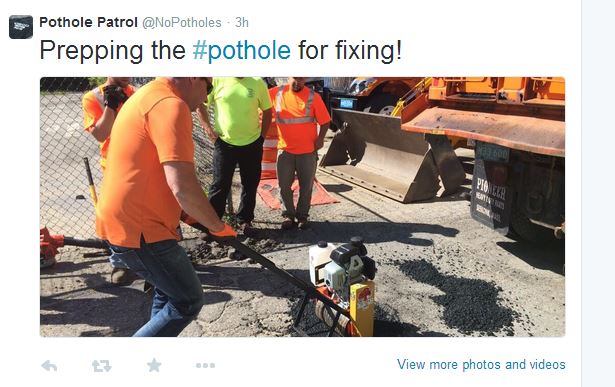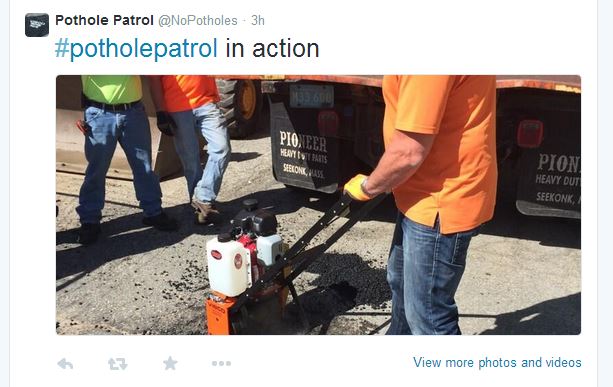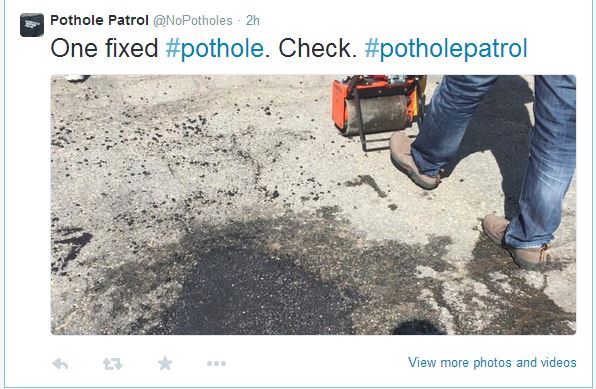by
[user not found]
| Jun 03, 2014
I’m brand new here at VIBCO.
Brand brand new.
Like 5 days on the job new… and my start here has been anything but conventional.
Typically, a new hire to a company might spend the first few days, weeks or even months learning company protocols, passwords and preparing to actually do the work that they were hired to do.
There’s usually a considerable amount of time before a new hire will actually get the chance to understand and feel acclimated to what exactly the company is, what it does or how it really operates to PROVIDE VALUE.
Those first few months can feel like being in a bubble, separated from the reality of the company.
Kind of like the first two years of college.
You know you are going to eventually get to the great learning in your major coursework, but you have to slog through the Gen Ed requirements first.
That slow orientation process means that there's of build up before the bang.
Ideas, questions, concerns, hopes - all in anticipation of actually making a contribution.
But then, when it happens, when you finally get through the break-in process, the energy and excitement of the new opportunity has diminished.
More like a dull thud. Not a bang.
My first week at VIBCO? It was all bang!
This morning was the biggest bang yet!
I got the chance to see, first-hand, VIBCO's customer focus in action.
I got to go to a product demonstration and training session in Swansea, Massachusetts.
The headline - I saw exceptional customer service, learning through showing, and an unwavering faith in a quality product made in the USA.
Let Me Set the Stage…
Last month, the Swansea Highway Department purchased a VIBCO Pothole Patcher™ to replace/augment their existing pothole fixing tool kit (plate compactors, hand tampers, ride-on roller, etc.), only to call the VIBCO offices a few days after taking delivery to voice some concerns and frustrations with the product.
Rather than get into a long discussion and game of verbal charades over the phone with the customer, Karl and VIBCO’s creative director, Ed, scheduled a time to go out in the field with the road crew and provide a demonstration and training session. (I've also learned that if the customer wasn't within an easy drive, they would have used something called a Virtual Van Visit - also something worth checking out.)
I've never been part of a company where the first question is "can we go see them in person?" whenever there is a customer issue.
Most folks go out of their way to avoid direct customer contact all the time… even more so when there is a problem.
Not here.
Apparently we race into the fire instead of running from it.
So this is how the visit went from the perspective of a guy that started working at VIBCO 5 days ago.
A Quick Demonstration
We pulled into the Swansea Highway Department and were greeted by the team of workers in charge of keeping the town's road clean, safe and drivable.
Everyone shook hands and shared some friendly banter before getting down to business: the Pothole Patcher™ wasn't satisfying their needs and they wanted answers.
As the crew explained their issues with the equipment, we all walked over to a small pothole near the edge of the grounds.
A dump truck rolled up with hot asphalt in the bed.
There were shovels attached to the truck and the work crew immediately went to work. They poured, shoveled and spread the asphalt in and around the pothole in preparation for the Pothole Patcher™ demonstration.
As the team finished pouring hot asphalt onto the hole, Karl rolled out the Pothole Patcher™, powered on the machine with a single pull of the draw cord and went to work.
The machine's engine purred along as the once lumpy mound of steaming asphalt turned into a smooth surface. The Pothole Patcher™'s 1,600 lbs of compaction force and 12-inch drum turned and unsightly pothole into a perfectly flat patch that will last.
During the demonstration, Karl offered information on best practice and technique. As he pushed and pulled the machine over the asphalt, Karl explained…
"Consistent even movement is KEY to getting the most out of the Pothole Patcher™." Karl Wadensten
Karl added, " You gotta keep moving… if you stop at any time, you can lose your momentum and risk sinking the Patcher."
He went on to explain that if you keep that technique in mind, you can use the machine to repair any size and any shape pothole - stubborn, awkward, large - no problem.
The entire process from start to finish was recorded start to finish on the Pothole Patrol’s Twitter page:




A Changed Mind
Once the demonstration was finished, you could actually see how the mindset had changed - body language was different, eyes were different, words and tone were different.
It was like night and day.
The Swansea team went from wanting to return their Pothole Patcher™ to wanting to keep it and continue to use it - maybe even buying another one!
And all it took was a short 45 minute demonstration, some helpful literature and an openness to hear the customer’s problems and concerns rather than ignoring the problem and avoiding the customer’s complaint.
To Wrap Up…
For some it takes months to understand what a company does, what their culture is like and how they function as an organization of people working towards the same goal.
For me, I saw it in a matter of one day – not even a full week in.
I saw a skeptical, frustrated customer turn into an enlightened, satisfied customer in under an hour… I saw one go from disappointed to instantly excited to use the product that they were adamant about returning just a week ago.
It was the VIBCO way in action: an unmatched customer service experience and a drive to go the extra mile to see a satisfied - actually satisfied , informed customer walk away with a product that is both made in the USA and actually does what is says it will do - and does it better than any other product on the market.
Now that's customer service. And I'm really excited about my new job.